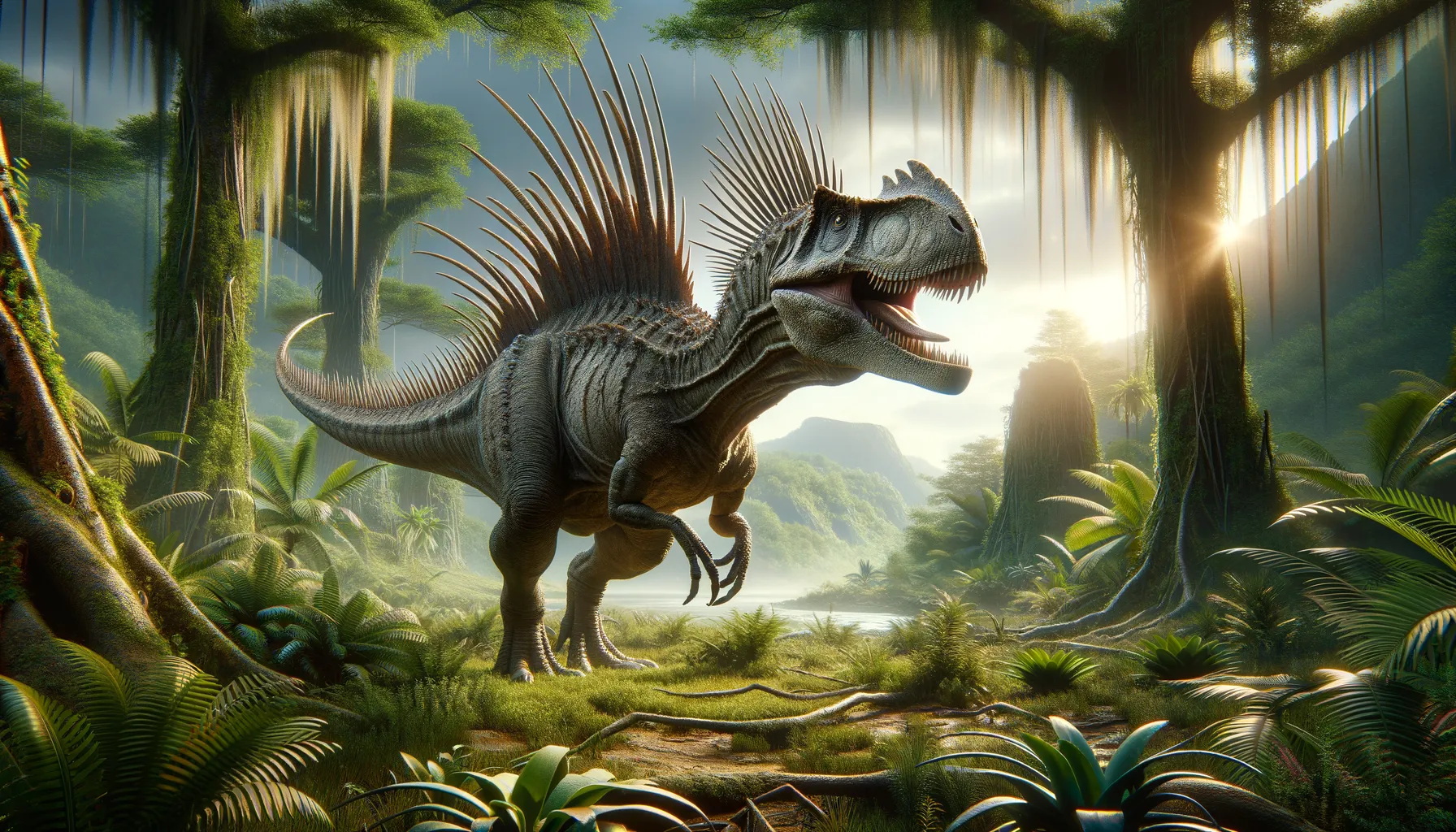
Lexovisaurus
Shielded by nature, armored for survival.
Period
Jurassic
Length
About 15 to 20 feet long.
Height
Roughly 4 to 5 feet at the shoulder.
Weight
Approximately 2-3 tons.
Lexovisaurus was a medium-sized, herbivorous, armored dinosaur from the Jurassic period. It was known for its long, bony spikes protruding from its sides, offering it significant protection against predators. Its fossils were primarily found in Europe, particularly in England and France, giving us insight into its life and environment. This dinosaur thrived in a lush ecosystem with plenty of vegetation to support its herbivorous lifestyle.
Diet
Lexovisaurus was herbivorous, feeding primarily on low-lying vegetation such as ferns and cycads. Its flat teeth were well-suited for grinding plant materials, suggesting it could process a variety of tough plant matter.
Hunting
As a plant-eater, Lexovisaurus did not hunt other animals but instead focused on foraging for food. It likely spent much of its time grazing in groups, making it less vulnerable to predators.
Environmental challenges
Living in a dinosaur-rich environment posed significant challenges, including potential encounters with predators like carnivorous theropods. The constantly changing climate of the Jurassic also meant that Lexovisaurus had to adapt to varying vegetation availability. Furthermore, competition for food with other herbivores was a crucial survival challenge.
Speed
Moderate, due to its heavily armoured body.
Lifespan
Estimated at around 20-30 years.
First discovery
First discovered in England in the 19th century.
Fun Facts
- Lexovisaurus was a dinosaur that lived during the Middle Jurassic period, about 160 million years ago.
- This dinosaur was part of the Stegosauria group, which means it shared similarities with the well-known Stegosaurus.
- Lexovisaurus is known for having body armor, with spikes and plates along its back similar to other stegosaurs, although exact details of its armor vary due to limited fossil evidence.
- Its name, Lexovisaurus, means 'Lexovii lizard', named after the Lexovii tribe from Normandy, near where its fossils were first found.
- The fossils of Lexovisaurus have been discovered primarily in England, providing a glimpse into the ancient ecosystems that once thrived there.
- Unlike some of its relatives, Lexovisaurus wasn't as heavily armed, suggesting it may have relied more on its agility than armor for protection.
- Lexovisaurus was a herbivore, meaning it primarily ate plants, which it likely snipped with its beak-like mouth.
Growth and Development
Lexovisaurus likely hatched from eggs and underwent rapid growth during its juvenile stages to reach a size where its armor provided protection. As it matured, the bony spikes and plates became more pronounced, offering better defense against predators. Its development rate and growth patterns would have been influenced by environmental factors and resource availability.
Habitat
Lexovisaurus inhabited lush forests and open plains during the Jurassic. Its environment provided ample vegetation for its herbivorous diet, with access to water sources essential for its survival. This dinosaur may have preferred areas with dense foliage to use as camouflage and protection from carnivorous dinosaurs.
Interaction with other species
Lexovisaurus coexisted with various dinosaur species, including other herbivores and potential predators. It likely formed herds for protection, relying on safety in numbers to fend off carnivorous threats. Its presence in a diverse ecosystem would have contributed to the dynamic balance of plant and animal life.
Natural lifespan
Lexovisaurus likely lived 20 to 30 years in the wild, assuming it survived the perils of its youth.
Reproduction
Like many dinosaurs, Lexovisaurus reproduced by laying eggs. The nesting sites would have been chosen for safety and proximity to food sources, with the mother likely guarding the eggs. Clutch size and parental care levels are subjects of ongoing research.
Social behaviour
Lexovisaurus likely exhibited social behaviors typical of herbivorous dinosaurs, such as forming herds. These groupings offered protection from predators and facilitated social interaction. While primarily peaceful, herd dynamics could have involved competition for resources or mates.
Fossil locations
Fossils of Lexovisaurus have been predominantly unearthed in England, with some finds in parts of France. These discoveries provide valuable insights into its geographical distribution during the Jurassic period. The well-preserved fossil remains contribute to our understanding of its anatomy and lifestyle.
